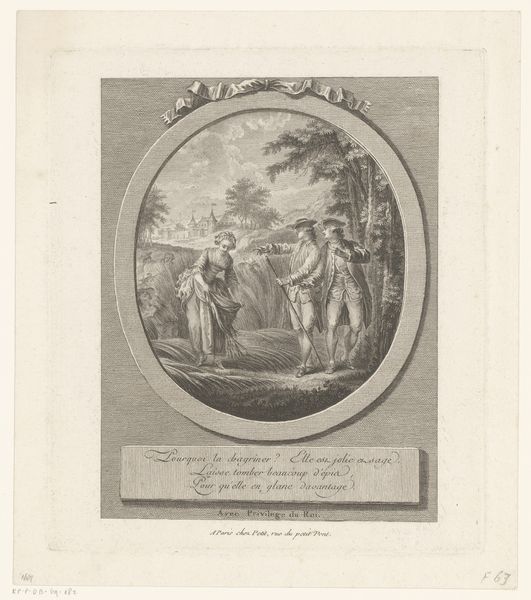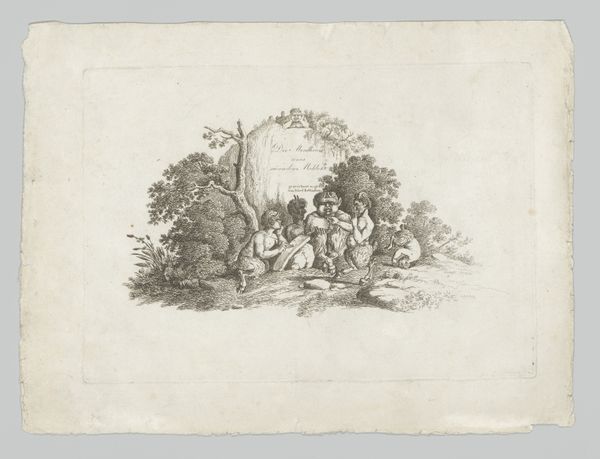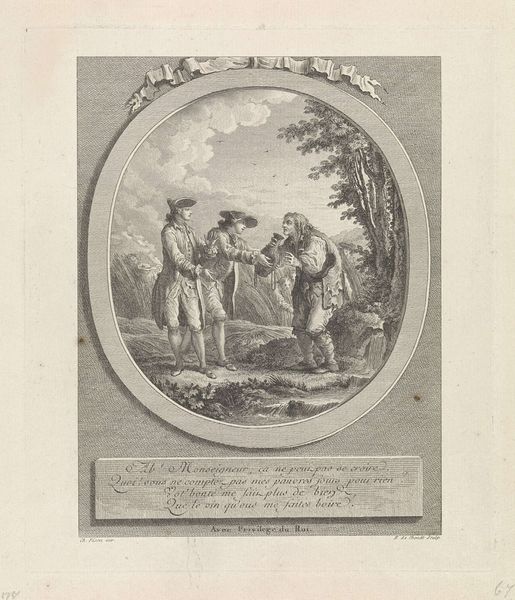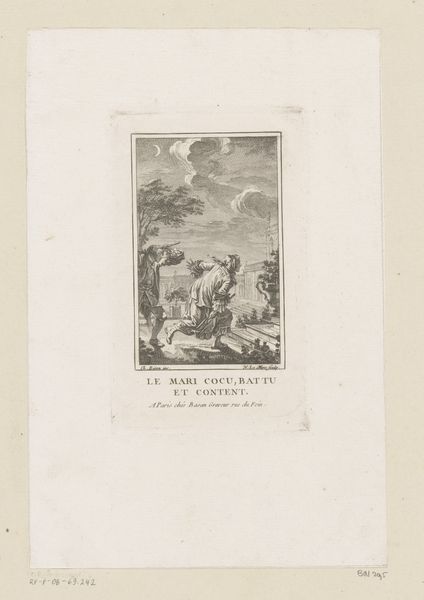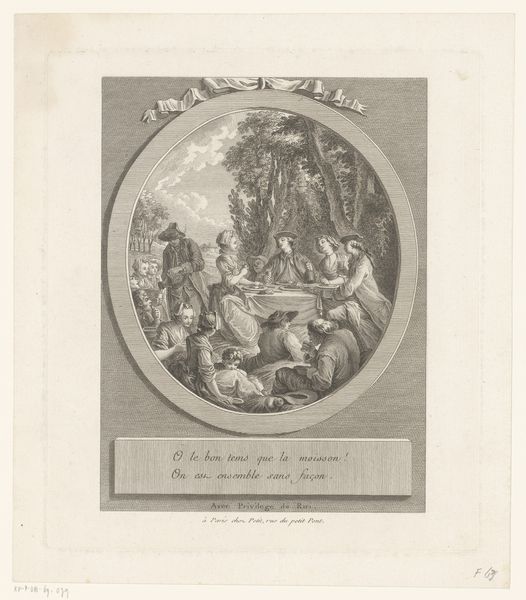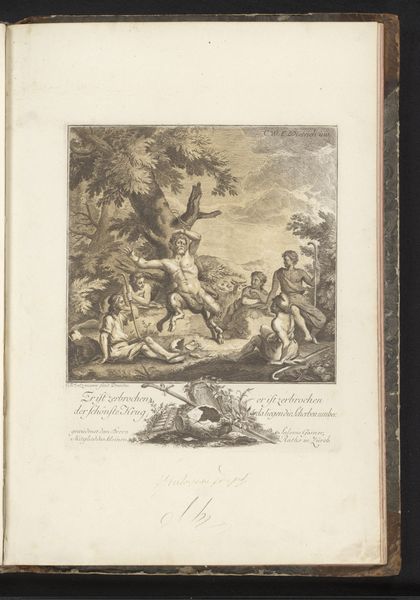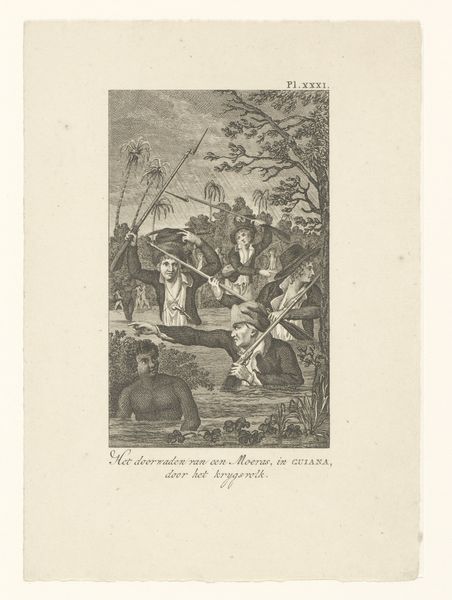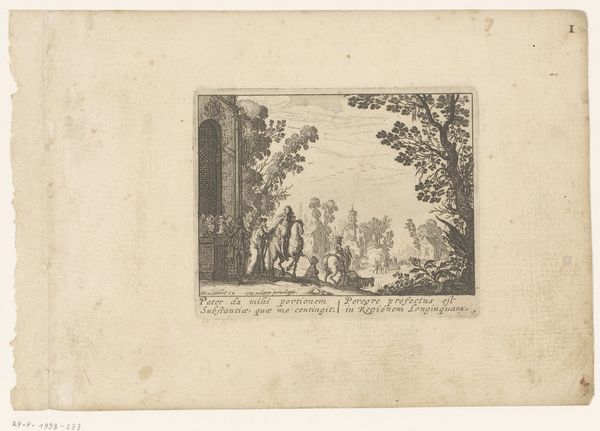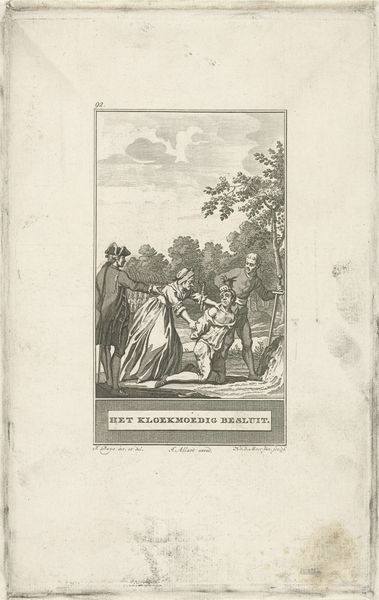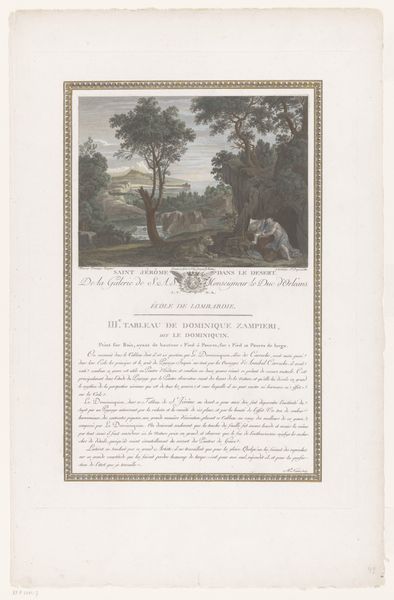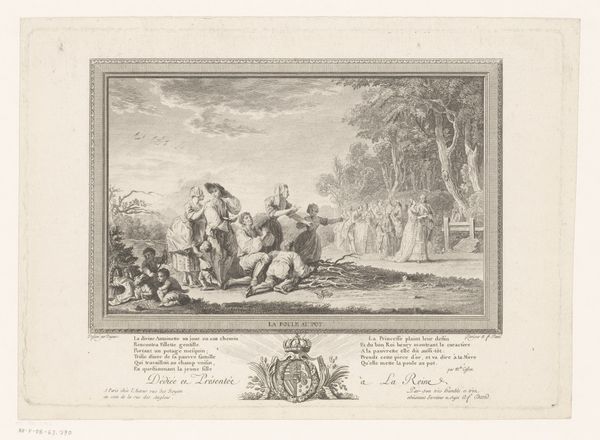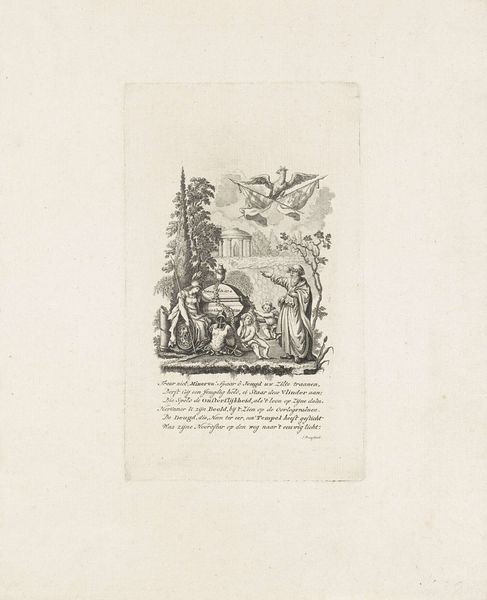
Dimensions: height 224 mm, width 143 mm
Copyright: Rijks Museum: Open Domain
This engraving, titled "Drie putti met attributen in een berglandschap" was created by Reinier Vinkeles. Vinkeles, born in 1741, lived through a period of immense social change marked by the Enlightenment and nascent industrialization, and as such, his work often reflects the cultural values of 18th-century Europe. In this image, putti, the cherubic figures that populate much of Renaissance and Baroque art, frolic in an idealized landscape. But these aren't just any cherubs; they carry attributes that might allude to different social classes or professions. One lounges with a chalice, while another seems to be working the land. The wheelbarrow at the bottom hints at a life of labor. Classical art often used allegories to teach moral lessons, and looking at this, I can't help but wonder, is Vinkeles subtly commenting on the social strata of his time? What does it mean to depict the working class as cherubic? Is it glorifying labor, or sentimentalizing it?
Comments
No comments
Be the first to comment and join the conversation on the ultimate creative platform.
